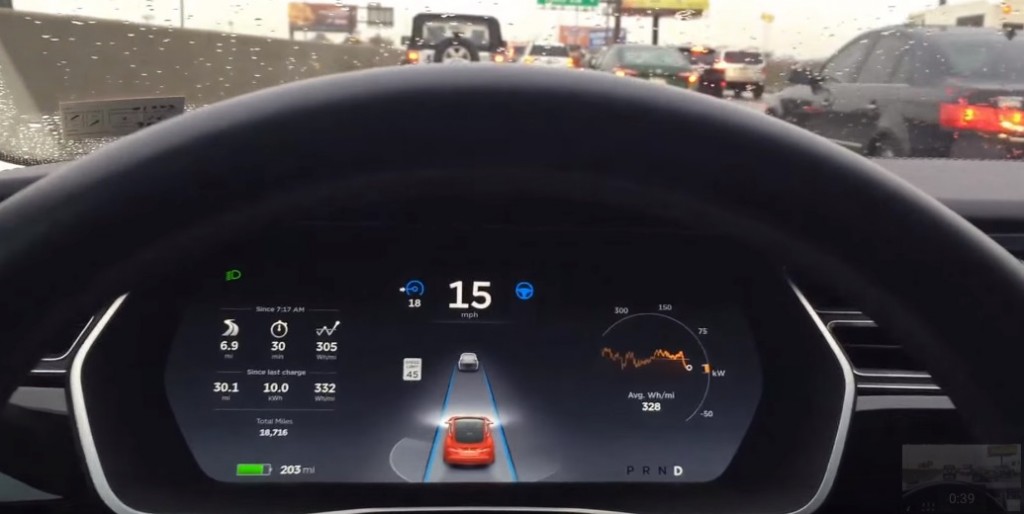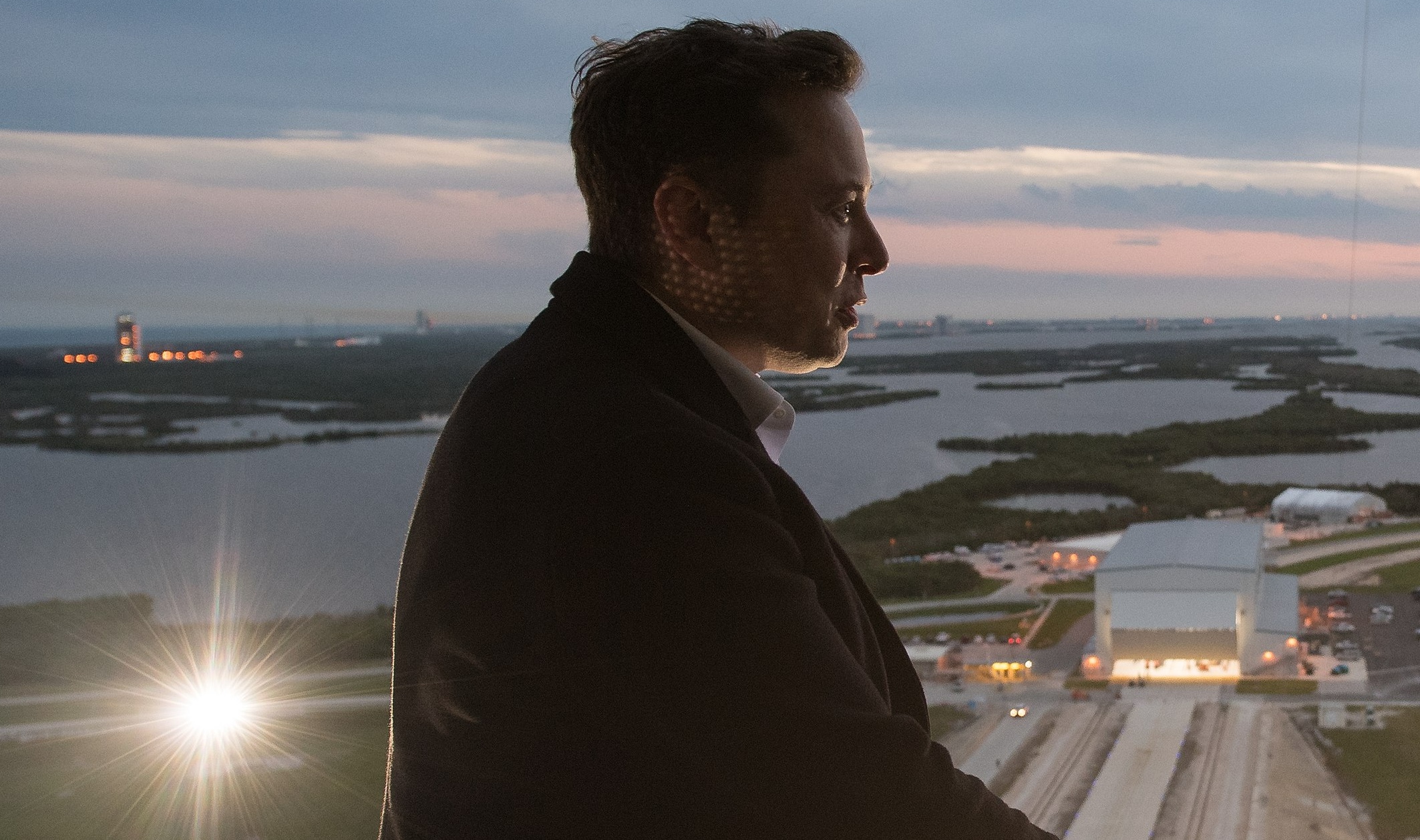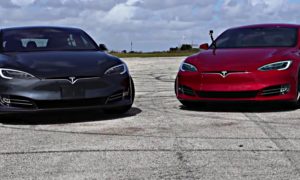Lifestyle
Mileage on a Tesla is a Badge of Honor

When my husband told me that his meeting in out of state last week was postponed, I was a little disappointed. You see it would be that meeting that would get our Tesla over the 20,000 mile mark just in time for our one year anniversary of ownership on December 4th.
Fortunately, it was rescheduled to today. For one fleeting moment last night, I mentioned how it is just a little bit crazy that he would be driving more than 3 hours each way to attend a 1.5 hour meeting. He reminded me that I was happy about the trip because of the odometer goal. This morning I received a text message from him:
“You should do a post on how owning a Tesla makes you want to drive more”
I told him that it’s already been done. Nearly every owner I’ve ever spoken to has said they now drive more, even so far as making excuses to run errands or hit a new Supercharger. But then I thought about it for a minute and asked myself why. I came to several conclusions.
Mileage in the years before EV
In the “ICE Age” of cars, mileage is a bad thing. Used car ads tout low mileage or try to justify higher numbers with claims of mostly highway driving. Gasoline powered cars have thousands of parts that make up major systems such as the engine, fuel system, drive train, exhaust and transmission. Many of these parts have a life expectancy so if you put a lot of miles on your cars or buy used, you can expect to have to replace a water or fuel pump, belts, a muffler or even a whole transmission. What makes a gasoline engine so inefficient is heat loss. When you consider all that heat combined with so many small parts, some of which are rubber, it starts to make sense when you hear someone dreading their annual inspection because they wonder what part(s) they’re going to have to pay to replace in order to get the car to pass. It also starts to make sense when you learn that traditional car dealerships make more profit on parts and services than they do on sales. Gas cars are complex machines and the more you use them, the higher your risk of something going wrong.
Mileage beyond necessity
How many miles you drive on a daily basis related to your work or school routine is a very personal thing. When we got our car, my husband’s daily work commute was 22 miles round trip. It is even shorter now. Mine, which the Tesla makes once per week, is 32. One gentleman I chatted with a bit last year when we were both waiting for our cars to be built drives well over 100 miles each day. Some owners are retired. Some are medical professionals that work fewer than five days per week. For that reason, the total amount of miles you rack up can be very different than someone else. Yet for so many owners that I’ve spoken to, it is their non-commute mileage that is off the carts. They actually want to drive. The car is enjoyable, quiet, comfortable and fast. The internet radio keeps you company. And unlike the gasoline cars we’ve left behind, we are proud and almost eager to collect more miles.
Mileage is a badge of honor

I’ve come to the realization that mileage on a Tesla is a badge of honor. For one, it sort of blows detractors out of the water. Find me 10 people that think they “can’t” own a Tesla for a reason other than cost, and I’ll prove to 9 of them that they are wrong. Secondly, driving so many gas free miles is a fun way to stick it to big business – both oil and the auto industry as a whole. This is especially true in those states that ban Tesla’s direct sales model. A third reason is psychological. A small survey showed that many Tesla owners would not have otherwise chosen a car with a price tag close to that of their Model S. The more gas free miles you drive, the more you can justify the cost. In most cases, the cost of electricity at home is significantly less per mile than gas. In the case of long distance trips on the free super charger network, your fuel cost saving is 100%. (Add in a mileage reimbursement for business, and you may actually make a profit to take your Tesla while saving your company money compared to the cost of taxis and trains.)
It won’t be long before our Tesla, delivered in December 2014, has more miles on the odometer than our Hyundai, which was purchased in December 2012. It’s no wonder because aside from the fact that owning the Tesla makes us want to drive more, it also makes us want to drive the Hyundai less. Only one time in a whole year did we choose to drive that car. We had just washed and detailed the Tesla for my first ever local car show entry the following morning and didn’t want to get it dirty. Otherwise, I see no reason the two of us will ever be in the Hyundai together again.
How many miles does your Tesla have? Leave me a comment below!
Lifestyle
EV fans urge Tesla to acquire Unplugged Performance for edge in fleet and security industry
Unplugged Performance has built a name for itself by producing performance upgrades for Tesla vehicles.

A growing number of Tesla enthusiasts and longtime community voices are calling on the electric vehicle maker to acquire Unplugged Performance, a California-based aftermarket company best known for tuning Tesla vehicles and developing specialized government fleet solutions under its UP.FIT division.
The idea was once considered a niche proposal among EV fans, but it is now gaining serious attention not just as a performance play but as a strategic move to deepen Tesla’s roots in the fleet and security industry.
A strategic fit
Unplugged Performance has built a name for itself by producing performance upgrades for Tesla vehicles, from track-optimized components to visual and aerodynamic upgrades. But in recent years, its UP.FIT division has pivoted toward a more functional future by outfitting Tesla vehicles like Model Ys for police, military, and government use.
That work has sparked growing calls for closer collaboration with Tesla, especially as the EV maker increasingly leans into autonomy, AI, and fleet services as core components of its next chapter.
“I posted this four years ago, but I think it’s more true now than ever,” wrote Whole Mars Catalog, a well-known Tesla investor and FSD Beta tester, on X. “Tesla should buy Unplugged. But not just as a Performance division. What they are doing with UP.FIT unlocks large government and commercial fleet purchases that can improve utilization.”
Tesla fans such as shareholder Sawyer Merritt echoed the sentiment, calling Unplugged a “great fit within Tesla.” adding, “They are literally located directly next to Tesla’s design studio in Hawthorne.”
Enabling the next wave
Supporters of the idea noted that integrating Unplugged into Tesla’s corporate structure could help accelerate the adoption of autonomous technologies in government sectors. With UP.FIT patrol cars already in use across some U.S. police departments, Tesla fans envisioned a future where self-driving Teslas could potentially revolutionize law enforcement, search-and-rescue, and public service logistics.
“Just imagine how autonomous patrol cars could transform policing and bring us into a safer future,” the veteran FSD tester wrote.
The benefits could also extend to Tesla’s existing consumer base. “They also have some incredible products in the works that I think will appeal to many ordinary Tesla drivers — not just those looking for performance or mods. Stuff that’s so good it should have come straight from the design studio next door,” Whole Mars Catalog noted.
Unplugged Performance, founded in 2013, shares not just a product vision with Tesla, but also geography. Its Hawthorne headquarters sits directly adjacent to Tesla’s design studio, and the two companies have maintained a close working relationship over the years. The aftermarket firm has long positioned itself as a “mission-aligned” partner to Tesla.
In response to the recent calls for acquisition, Unplugged Performance acknowledged the support from the community. “Our very existence is to support the Tesla mission with @UpfitTesla and @UnpluggedTesla,” Unplugged CEO Ben Schaffer posted on X. “We love working with Tesla and are grateful for the community’s support since 2013!”
Elon Musk
X account with 184 followers inadvertently saves US space program amid Musk-Trump row
Needless to say, the X user has far more than 184 followers today after his level-headed feat.

An X user with 184 followers has become the unlikely hero of the United States’ space program by effectively de-escalating a row between SpaceX CEO Elon Musk and President Donald Trump on social media.
Needless to say, the X user has far more than 184 followers today after his level-headed feat.
A Near Fall
During Elon Musk and Donald Trump’s fallout last week, the U.S. President stated in a post on Truth Social that a good way for the United States government to save money would be to terminate subsidies and contracts from the CEO’s companies. Musk responded to Trump’s post by stating that SpaceX will start decommissioning its Dragon spacecraft immediately.
Musk’s comment was received with shock among the space community, partly because the U.S. space program is currently reliant on SpaceX to send supplies and astronauts to the International Space Station (ISS). Without Dragon, the United States will likely have to utilize Russia’s Soyuz for the same services—at a significantly higher price.
X User to the Rescue
It was evident among X users that Musk’s comments about Dragon being decommissioned were posted while emotions were high. It was then no surprise that an X account with 184 followers, @Fab25june, commented on Musk’s post, urging the CEO to rethink his decision. “This is a shame this back and forth. You are both better than this. Cool off and take a step back for a couple days,” the X user wrote in a reply.
Much to the social media platform’s surprise, Musk responded to the user. Even more surprising, the CEO stated that SpaceX would not be decommissioning Dragon after all. “Good advice. Ok, we won’t decommission Dragon,” Musk wrote in a post on X.
Not Planned, But Welcomed
The X user’s comment and Musk’s response were received extremely well by social media users, many of whom noted that @Fab25june’s X comment effectively saved the U.S. space program. In a follow-up comment, the X user, who has over 9,100 followers as of writing, stated that he did not really plan on being a mediator between Musk and Trump.
“Elon Musk replied to me. Somehow, I became the accidental peace broker between two billionaires. I didn’t plan this. I was just being me. Two great minds can do wonders. Sometimes, all it takes is a breather. Grateful for every like, DM, and new follow. Life’s weird. The internet’s weirder. Let’s ride. (Manifesting peace… and maybe a Model Y.)” the X user wrote.
Lifestyle
Tesla Cybertruck takes a bump from epic failing Dodge Charger
The Cybertruck seemed unharmed by the charging Charger.

There comes a time in a driver’s life when one is faced with one’s limitations. For the driver of a Dodge Charger, this time came when he lost control and crashed into a Tesla Cybertruck–an absolute epic fail.
A video of the rather unfortunate incident was shared on the r/TeslaLounge subreddit.
Charging Charger Fails
As could be seen in the video, which was posted on the subreddit by Model Y owner u/Hammer_of_something, a group of teens in a Dodge Charger decided to do some burnouts at a Tesla Supercharger. Unfortunately, the driver of the Charger failed in his burnout or donut attempt, resulting in the mopar sedan going over a curb and bumping a charging Cybertruck.
Ironically, the Dodge Charger seemed to have been parked at a Supercharger stall before its driver decided to perform the failed stunt. This suggests that the vehicle was likely ICE-ing a charging stall before it had its epic fail moment. Amusingly enough, the subreddit member noted that the Cybertruck did not seem like it took any damage at all despite its bump. The Charger, however, seemed like it ran into some trouble after crashing into the truck.
Alleged Aftermath
As per the the r/TeslaLounge subreddit member, the Cybertruck owner came rushing out to his vehicle after the Dodge Charger crashed into it. The Model Y owner then sent over the full video of the incident, which clearly showed the Charger attempting a burnout, failing, and bumping into the Cybertruck. The Cybertruck owner likely appreciated the video, in part because it showed the driver of the Dodge Charger absolutely freaking out after the incident.
The Cybertruck is not an impregnable vehicle, but it can take bumps pretty well thanks to its thick stainless steel body. Based on this video, it appears that the Cybertruck can even take bumps from a charging Charger, all while chilling and charging at a Supercharger. As for the teens in the Dodge, they likely had to provide a long explanation to authorities after the incident, since the cops were called to the location.
-

 Elon Musk1 day ago
Elon Musk1 day agoWaymo responds to Tesla’s Robotaxi expansion in Austin with bold statement
-

 News1 day ago
News1 day agoTesla exec hints at useful and potentially killer Model Y L feature
-

 Elon Musk2 days ago
Elon Musk2 days agoElon Musk reveals SpaceX’s target for Starship’s 10th launch
-

 Elon Musk3 days ago
Elon Musk3 days agoTesla ups Robotaxi fare price to another comical figure with service area expansion
-

 News1 day ago
News1 day agoTesla’s longer Model Y did not scale back requests for this vehicle type from fans
-

 News1 day ago
News1 day ago“Worthy of respect:” Six-seat Model Y L acknowledged by Tesla China’s biggest rivals
-

 News2 days ago
News2 days agoFirst glimpse of Tesla Model Y with six seats and extended wheelbase
-

 Elon Musk2 days ago
Elon Musk2 days agoElon Musk confirms Tesla is already rolling out a new feature for in-car Grok


















